Indie rock is a genre of rock music that originated in the United States and United Kingdom in the 1970s. Originally used to describe independent record labels, the term became associated with the music they produced and was initially used interchangeably with alternative rock or "guitar pop rock". In the 1980s, the use of the term "indie" started to shift from its reference to recording companies to describe the style of music produced on punk and post-punk labels. During the 1990s, grunge and punk revival bands in the US and Britpop bands in the UK broke into the mainstream, and the term "alternative" lost its original counter-cultural meaning. The term "indie rock" became associated with the bands and genres that remained dedicated to their independent status. By the end of the 1990s, indie rock developed several subgenres and related styles, including lo-fi, noise pop, emo, slowcore, post-rock, and math rock. In the 2000s, changes in the music industry and a growing importance of the internet enabled a new wave of indie rock bands to achieve mainstream success, leading to questions about its meaningfulness as a term.
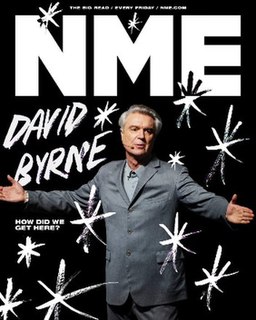
New Musical Express (NME) is a British music, film and culture website and brand. Founded as a newspaper in 1952, with the publication being referred to as a 'rock inkie', the NME would become a magazine that ended up as a free publication, before becoming an online brand which includes its website and radio stations.

Manic Street Preachers are a Welsh rock band formed in Blackwood in 1986. The band consists of cousins James Dean Bradfield and Sean Moore, plus Nicky Wire. They are often colloquially known as "the Manics". They form a key part of the 1990s Welsh Cool Cymru cultural movement.
Skate punk is a skater subculture and punk rock subgenre that developed in the 1980s. Originally a form of hardcore punk that had been closely associated with skate culture, skate punk evolved into a more melodic genre of punk rock in the 1990s. Since then, it has predominately featured fast tempos, lead guitar playing, fast drumming, and singing. Occasionally, skate punk also combines the fast tempos of hardcore punk and melodic hardcore with the catchy hooks of pop-punk.

The Fat of the Land is the third studio album by English electronic music group The Prodigy, released on 30 June 1997 through XL Recordings. The album received critical acclaim and topped the UK Albums Chart and the US Billboard 200. It has sold over 10 million copies worldwide as of 2019.
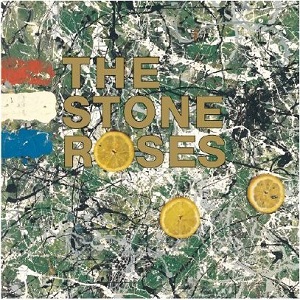
The Stone Roses is the debut studio album by English rock band the Stone Roses. It was recorded mostly at Battery Studios in London with producer John Leckie from June 1988 to February 1989 and released in May of that year by Silvertone Records.

The Creatures were an English band formed in 1981 by vocalist Siouxsie Sioux and drummer Budgie of the group Siouxsie and the Banshees. The Creatures released their first EP Wild Things in 1981. They recorded four studio albums: Feast in 1983, Boomerang in 1989, Anima Animus in 1999 and Hái! in 2003.

Tindersticks is the debut album by the chamber pop band Tindersticks, released in the UK on 11 October 1993 on This Way Up. Following positive reviews for their early singles and live performances, it was released to widespread critical acclaim by the music press, eventually being named album of the year by the UK music magazine Melody Maker.
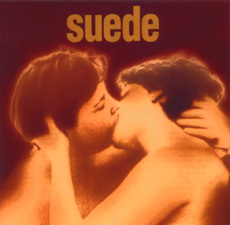
Suede is the debut album by English alternative rock band Suede, released in March 1993 on Nude Records. It was recorded in London at Master Rock studios late 1992 and early 1993 and was produced by Ed Buller. At the time the fastest-selling debut album in British history in almost a decade, Suede debuted at the top of the UK Albums Chart, won the 1993 Mercury Music Prize, and is often cited as one of the first Britpop records. Displaying a sound of Britishness and glam rock, its music and lyrical content has been compared to The Smiths and early David Bowie.
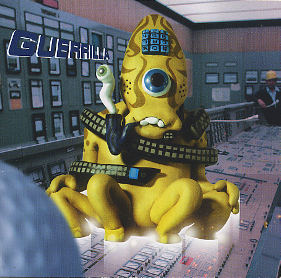
Guerrilla is the third studio album by Welsh rock band the Super Furry Animals. The record was released on 14 June 1999 by Creation Records and peaked at number 10 in the UK Albums Chart. Guerrilla was conceived as a commercial 'pop' album and was produced by the band themselves, as regular producer Gorwel Owen felt exhausted after a busy schedule working for other bands. Recording took place at Real World Studios, Box, Wiltshire in mid-1998 with the group experimenting with a sampler for the first time and writing a number of songs in the studio. The band tried to create a 45-minute long, immediate sounding record, and therefore chose the upbeat songs from the 25 tracks which were recorded during sessions for the album. Guerrilla was chosen as the album's title as a pun on the group's name.
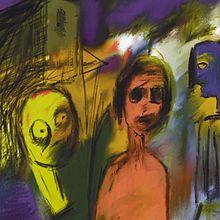
"Coffee & TV" is a song by the British rock band Blur. It was written by the band's guitarist, Graham Coxon, who also sang lead vocals rather than frontman Damon Albarn. The song appears on Blur's sixth studio album, 13 (1999), and was the second single released from the album on 28 June 1999. The lyrics describe Coxon's struggle with alcoholism and the song's video, featuring a sentient milk carton searching for Coxon, won several awards. Commercially, "Coffee & TV" reached No. 11 in the United Kingdom and No. 26 in Ireland. It was a major hit in Iceland, where it peaked at No. 2 in September 1999.

"Animal Nitrate" is the third single by English rock band Suede, released through Nude Records on 22 February 1993 and later included on the band's debut album Suede. It charted at No. 7 on the UK Singles Chart, making it the highest-charting single from the album. The song is the band's highest-charting single in Ireland and New Zealand, peaking at No. 11 in both countries. It also debuted and peaked at No. 21 in Sweden but stayed on the chart for only two weeks.
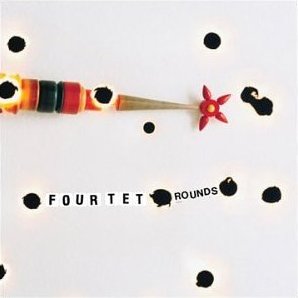
Rounds is the third solo album by British electronic musician Kieran Hebden, released under his alias Four Tet on 5 May 2003 by Domino Recording Company. Wanting to make a more personal record, Hebden recorded and produced the album in his North London flat over ten months using a desktop computer and a home hi-fi system. Its ten tracks feature elements of hip hop, jazz and folk; apart from a guitar part recorded for "Slow Jam", the music is composed from between 200 and 300 samples, many processed beyond recognition.

Stars is the fourth album by British-based pop/soul/jazz band Simply Red, released in September 1991. Five singles were released from the album, including the UK top ten hits "Stars" and "For Your Babies". The album was a worldwide success, particularly in the band's home country where it has been certified twelve times platinum and was the best-selling album of the year in the UK for both 1991 and 1992, the first album to be the best-seller in two consecutive years since Simon & Garfunkel's Bridge over Troubled Water in 1970–71. As of July 2016 it is the 14th best-selling album of all time in the UK.

1965 is the sixth studio album by American rock band The Afghan Whigs. It was released on October 27, 1998, by Columbia Records.

Millionaires is the eighth studio album by British alternative rock band James. During the Whiplash release cycle, guitarist Adrian Oxaal replaced founding member Larry Gott, and guitarist Michael Kulas joined the band. Touring to promote the release was cut-short when Booth injured his neck. With the release of The Best Of in early 1998, the band began recording their next album in May 1998. The sessions continued into February 1999 at a variety of studios: Ridge Farm, Hook End, Townhouse and Metropolis. While Brian Eno produced most of the record, the producer credit was also given to guitarist/violinist Saul Davies, keyboardist Mark Hunter, Steve Osborne, drummer David Baynton-Power and Faithless. Millionaires is an indie rock and pop release that drew comparison to Lou Reed and New Radicals.

Precious Falling is the second album by Quickspace, released in 1998.
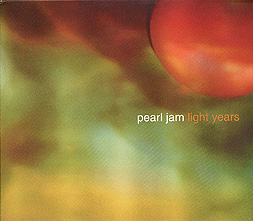
"Light Years" is a song by American rock band Pearl Jam. Featuring lyrics written by vocalist Eddie Vedder and music co-written by Vedder and guitarists Mike McCready and Stone Gossard, "Light Years" was released on July 10, 2000, as the second and final single from the band's sixth studio album, Binaural (2000). The song peaked at number 17 on the Billboard Mainstream Rock Tracks chart. The song was included on Pearl Jam's 2004 greatest hits album, rearviewmirror .
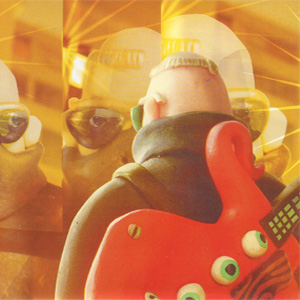
"Do or Die" is the eleventh single by Super Furry Animals. It was the third and final single to be taken from the Guerrilla album and was the band's last release for Creation Records. The track reached number 20 in the UK Singles Chart after its release on 17 January 2000. The group had originally wanted to release "Wherever I Lay My Phone " as the final single from Guerilla but Creation instead chose "Do or Die", a decision which the band claimed not to understand.
The Quietus is a British online music and pop culture magazine founded by John Doran and Luke Turner. The site is an editorially independent publication led by Doran with a group of freelance journalists and critics.

















